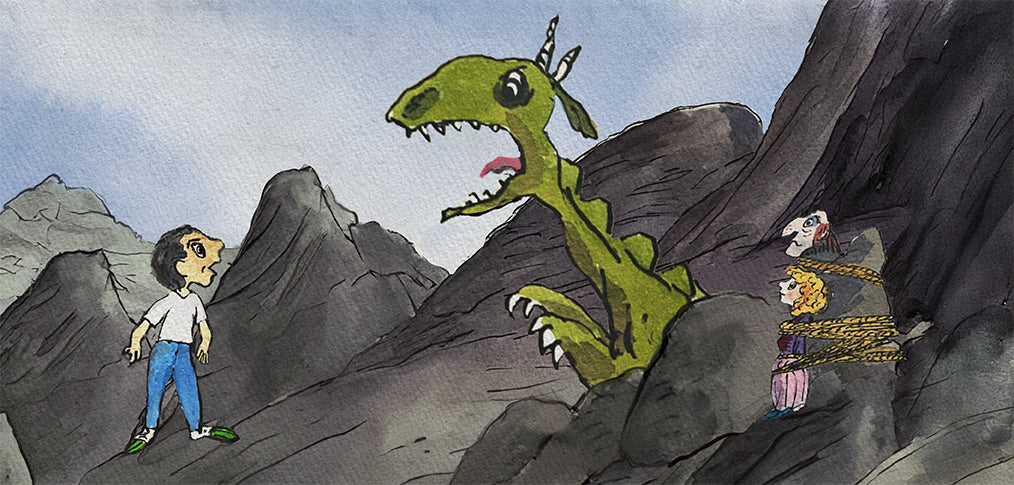
How Do Kids Understand Books Before They Can Read?
Janice Lawrence
How Illustrated Storybooks Help Late Readers Understand Complex Ideas
Some children see the world in pictures before they ever see it in print. Illustrated storybooks help these kids follow a story—even when the words are still out of reach.
Pictures build comprehension before fluency. When a child sees what’s happening in a picture, they can grasp meaning, make connections, and stay engaged—even if they can't yet sound out the words.
Visual stories motivate late readers. Kids who struggle with reading often lose confidence. But when illustrations tell part of the story, they feel capable, curious, and willing to keep trying.
Images teach emotional insight. Facial expressions, body language, and visual clues help children understand what characters feel—long before they can read those emotions in text.
Symbolic thinking starts with pictures. Big ideas—like “how others see me” or “fear changes behavior”—are tough to explain with words but instantly grasped in a single image.
Joy makes learning stick A playful, page-turning experience draws children back to the book again and again. Repetition boosts fluency. Joy builds memory.
One of the best ways to see how picture books support early language arts—especially reading comprehension—is in The Happy Boy Tricks the Dragon. In this tale, a cheerful young boy returns to find his village in ruins and his dearest friend taken by a terrible dragon. But instead of charging in with swords or fire, he does something smarter: he uses a magic mirror. When the dragon sees its own frightening reflection, it panics and runs.
This moment isn’t just clever—it’s visual gold. You can see the boy’s courage. You can feel the dragon’s fear. You can watch the whole story unfold, even without reading a single word. For a late reader or a child who learns best through images, it’s the kind of scene that builds understanding long before fluency.
Pictures Help Children Feel the Story
Illustrations give children another way into the story—one that doesn’t depend on reading the words. It’s quicker. More emotional. More intuitive. For visually dominant kids, the pictures reveal what the text alone might hide: a character’s feelings, the shape of a relationship, the reason something matters. What was once just a jumble of letters becomes a living, shared experience. They don’t just see the story—they feel it.
Here's Why...

Sometimes a picture is worth 1000 words. Children may not catch every word, but they see everything else—the raised eyebrow, the flick of a tail, the face that evolves when a character grows. When the pictures are descriptive, it is easier for a child to follow the story. Without them, the child drifts. And you might think they’re not listening; when really, they’re just looking for a way in.
Confidence comes before fluency. If a child feels lost or behind, they stop trying. But when a picture gives them insight, they “get it” without the words they’re back in the story. That small moment of success is where reading begins.
Comprehension doesn’t always come from decoding. We’re used to thinking that understanding follows sounding out. But many children understand far more than they can say or read. If we focus too hard on the words, we miss they’re already grasping the meaning.

Images make big ideas feel real. A dragon afraid of itself. A boy seeing himself as others see him. These are abstract ideas that are hard to understand. But a child can feel them instantly when they see them. Illustration makes metaphors visible and memorable.
Reading is more than decoding words. Reading stories not just about literacy. It’s about connection. When we laugh at the same scene or cry out in vicarious fear we become one with the story and with each other. Great illustrations make these moments happen.
Try it Out
- Read The Happy Boy Tricks the Dragon aloud or watch the Read-Along video with your child. (Scroll down the book’s page to find the "Watch the Video" button.)
- Pause to notice emotional turning points.
- Ask: “How do you think the happy boy felt when he found the village destroyed?”
- Ask: “What do you think he felt when he saw the dragon’s cave?”
- Talk about big emotions like fear, courage, and cleverness.
- Ask: “Have you ever felt nervous but did something brave anyway?”
- Ask: “Why do you think he used a mirror instead of a sword?”
- Help your child connect the story to their own experiences.
- Ask: “Have you ever been surprised by how someone saw you?”
- Ask: “What would you feel if you had a mirror that showed how others see you?”
- Dig a little deeper. Encourage thinking and empathy.
- Ask: “Why do you think the dragon got scared of itself?”
- Ask: “What would you have done if you were the happy boy?”
- Share your own experiences. Talk about a time you stayed calm in a hard moment, or when someone saw something good in you that you hadn’t noticed yet. Let your child see that grown-ups are still learning too.
TIPS
Look before you leap. Don’t worry if your child doesn’t want to read every word—let them enjoy the pictures first.
Everyone sees a bit differently. Avoid correcting their guesses too quickly. Insight often starts with imagination.
Books can be read over and over. Kids love re-reading their favorite stories. Familiar images can unlock new understanding.
Stop 'n' Think
One mirror. One moment. One dragon terrified by how the world sees it. What if you could look in the mirror and see not your reflection, but how others perceive you?

Ready to help your child grow as a reader—even before they read fluently?
Start with The Happy Boy Tricks the Dragon — a beautifully illustrated tale about cleverness, courage, and perception.

